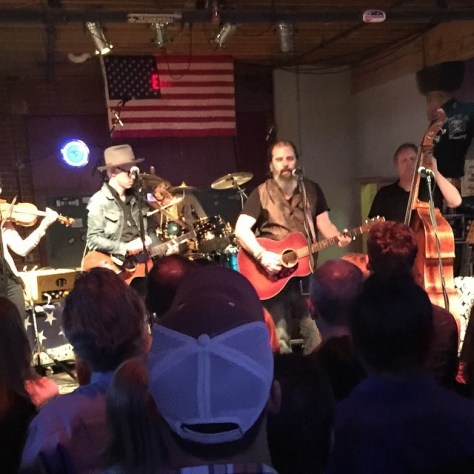Yes, I know it’s been a minute since I’ve posted here, especially anything in the music category. But after seeing all the end of year list of best albums and best songs, I decided to go a different direction and list the best concerts I attended (and didn’t attend) in 2015.
My taste is not your taste, so deal with it. But this is what I saw and loved in the past 12 months.

- Dawes at ACM@UCO in Bricktown – I have to admit, I knew just a little about this group. Thought they were some sort of hipster/slacker band and they weren’t in my streaming rotation. Then, on my way back from Kansas City (I think), I heard an interview with Dawes front man Taylor Goldsmith on Sirius XM, which I was only listening to because it came with my wife’s new ride. And the songs they played along with the interview sounded more country than shoe gazing. So I filed that away. As fate would have it, I got an e-mail just a few days after that announcing that Dawes would be playing in OKC and for only $20 with John Moreland, a headliner in his own right, opening! Dragging my butt there on a school night and having to stand up all night (not good), I was greeted by a band that was much more energetic than their studio recordings and much more musically talented than I imagined -plus the added bonus of legacy guitarist Duane Betts being added to the band for the tour. Every song was dynamic, Goldsmith was an exquisite showman, and the crowd was in fever pitch all night. Afterward, I declared Dawes the best current American band. And they are.

- Steve Earle and the Dukes – Why he chose this venue to make his first Oklahoma City appearance since 1988 is a mystery to me, but there was no way I would miss it. The Wormy Dog is probably my second least favorite place to see a show, with the Diamond Ballroom ranking below. But I swallowed my pride and plunked down a very reasonable sum for what turned out to be an epic show. His backing band, the Dukes, were as tight as any unit around and Earle wheeled from song to song with very little banter and machine precision. The sweat was pouring from stage and crowd, but no one cared and when the show reached two hours, then two and a half, it looked like Earle was going to outlast his audience. It was well past midnight when he put the finishing touches on the last of eight encore songs, coming from left field with his own interpretation of the Troggs “Wild Thing”. Thirty-three songs after it began, the mesmerizing night of music turned into day with hopes that it wouldn’t be another 27 years before he came to town again.

- Jason Isbell and Sturgill Simpson – Even though I had been a big fan of the Drive By Truckers for some time (more on that later), I hadn’t really latched on to Jason Isbell’s solo efforts until a few months before. And I initially resisted Sturgill Simpson’s status as the next big weird hip thing – until I listened to his second album. And again, finding out that both of these headliners would be on the same stage was mind blowing. I was already mad that I had missed Isbell’s impromptu show at the Bricktown Events Center the previous summer when the Zoo Amp concert with Willie Nelson had been rained out. I refused to pay top dollar for that, since I figure Isbell would only get about 30 minutes as third fiddle on that bill and I wanted to remember Willie the way he was back in his Red Headed Stranger heyday. Very few people bought tickets to that show, and only a handful were lucky enough to get invited downtown for the “free show”, which lasted over two hours. Soooo, when the Winstar show with Isbell and Simpson was announced, no way was I going to miss being in that number this time. I do not enjoy the drive to Winstar and I don’t gamble, so I won’t go there unless it is something really special (or free, as in the case of an Alice In Chains show I attended there a year previously). Also, I don’t want to go unless I am able to get in the VIP seating, which makes it worth the drive. Fortunately, I happen to have some connections down there, and am able to secure said VIP seats, even though this time I had to pay. Seventy-five dollars was worth it. Three hundred dollars would have been worth it. Simpson blistered through a 15 song set that featured his compositions wrapped around some bluegrass and country favorites, featuring his Estonian guitarist Laur Joamets, who has the fastest guitar licks this side of Albert Lee. Simpson mixed in a little T Rex “Bang a Gong” in the finale, which was not lost on me but was a mystery to the majority of the 20-something audience. Then came Isbell, working through his immaculate “Southeastern” album, interspersed with his Drive By Truckers signature song “Decoration Day” and an old Candi Staton tune. There were only a dozen songs, but they were extended and crafted exquisitely, displaying a passion that opened up some of the understated delivery of his recorded work. Isbell displayed his perfect phrasing and surprised with his masterful guitar playing as well. All in all, a diverse show with two different types of front men who are unique in their own way.









